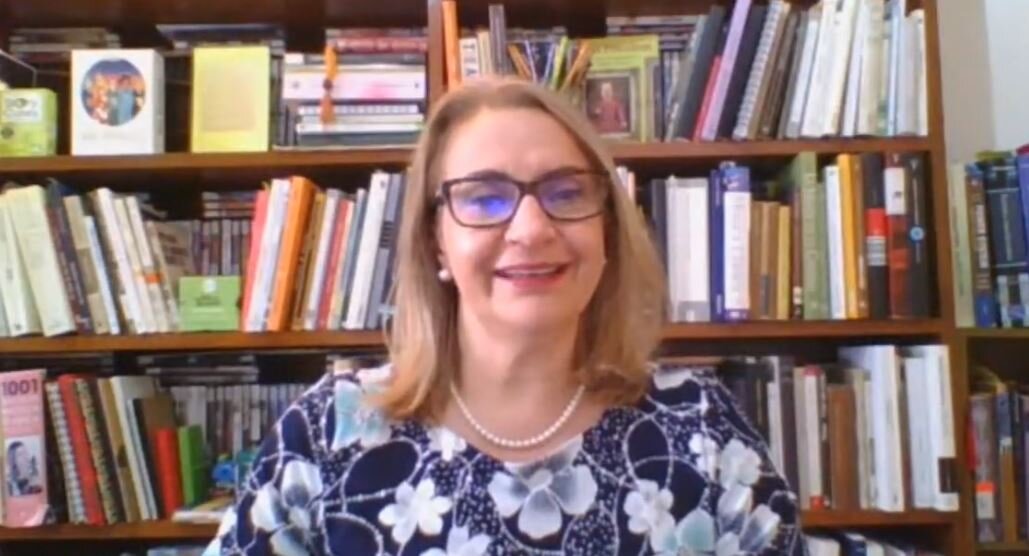“The experience of online classes is affected by numerous causes, including the teachers’ burden and the students’ boredom.”
Why is it so difficult to get students to participate in class and develop creative solutions to the teacher’s activity challenges? In our October webinar, Dr. Patricia Caratozzolo answers this question by emphasizing the relevance of knowing our students, specifically, the young people of Generation Z. Who are they? How do they communicate? What activities do they do in their free time? How can we develop their creativity? What activities can we implement in class to achieve this? If you did not have the opportunity to join us in the live session, you could click here to view the recording at any time.
A study conducted by Dr. Patricia Caratozzolo found a lack of initiative among students to develop their creative potential. Why is it that students do not find the challenges posed by teachers exciting or fun? Searching for how to engage them genuinely in the challenge activities, Professor Caratozzolo analyzed the effects of what she calls a super consumption of junk entertainment as one of the causes limiting students’ creativity, even though this might not be the only one nor the primary root of the problem. This type of entertainment is not necessarily wrong, but it also does not require anything creative from the person consuming it.
“When students have linguistic and cultural wealth, they can know themselves better, what they think and feel. The periodic table of emotions is a tool that can help them communicate and express themselves better.”
Here are some characteristics of Gen Z students, according to Seemiller and Grace (2016):
-
They prefer to use passive visual platforms like YouTube and Instagram.
-
They usually consult short, pre-directed texts.
-
They have little concentration over long periods.
-
Their social networks are virtual.
-
They use short texts on WhatsApp.
-
They express their opinions through memes and emojis.
Developing creativity in students does not just involve them. As teachers, we must ask ourselves if we are creative, too. After months of contingency, the online classroom’s experience continues to be affected by numerous factors, including the burden on the teachers and students’ tedium. Teachers have had to adapt and adjust the agendas and activities to compensate for the lack of face-to-face contact with their students, as Dr. Patricia Caratozzolo explains in this session.
Here are some ideas for combating a stressful or tedious school environment caused by the pandemic and the changes we have experienced:
-
Implement Serious-Storytelling.
-
Critical reading.
-
Creative Visualization.
-
Metacognition.
-
Cognitive flexibility.
-
Significant images.
-
Safety scaffolding.
-
Role-playing.
You can also integrate into the class those activities that you like to do as your hobby. If you like art, integrate this passion into your classes or other enjoyments like sports, literature, wrestling, cooking, decorating, etc.
“To change a class, we must start with ourselves.”
In this webinar, Dr. Patricia Caratozzolo shared ideas and creative reflection activities, integrating art into her virtual class without losing sight of the fundamental pedagogical and didactic aspects of the teaching-learning process. If you want to know more about this, check out the full webinar on the Observatory of Educational Innovation Facebook or YouTube.
Dr. Patricia Caratozzolo (pcaratozzolo@tec.mx) is an assistant professor and researcher in the Department of Mechatronics of the School of Engineering and Sciences on the Santa Fe Campus of Tecnológico de Monterrey. She is a project leader in Educational Innovation, a Senior Member of the IEEE, and a member of IAS, PES, Women in Engineering Association, and the International Association for Continuing Engineering Education.
If your native language is not Spanish, you can enable instantaneous, subtitled translation in this article on YouTube. To set this option, select the Subtitles option on YouTube (the subtitles will appear in Spanish), then select Settings ->Subtitles -> Translate Automatically, choose the language you desire.
Translation by Daniel Wetta.
This article from Observatory of the Institute for the Future of Education may be shared under the terms of the license CC BY-NC-SA 4.0 
)
)


)